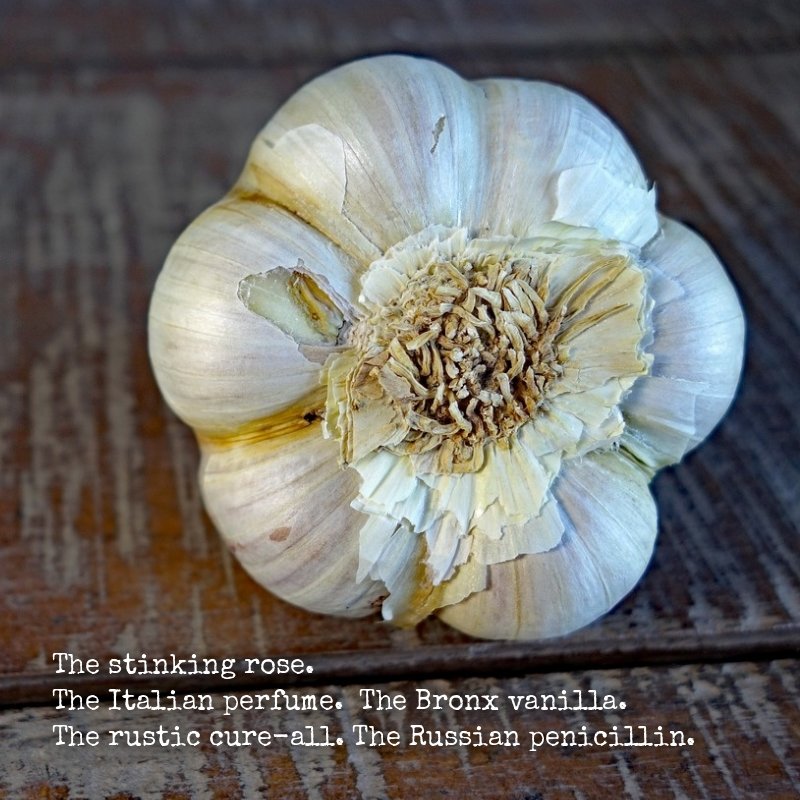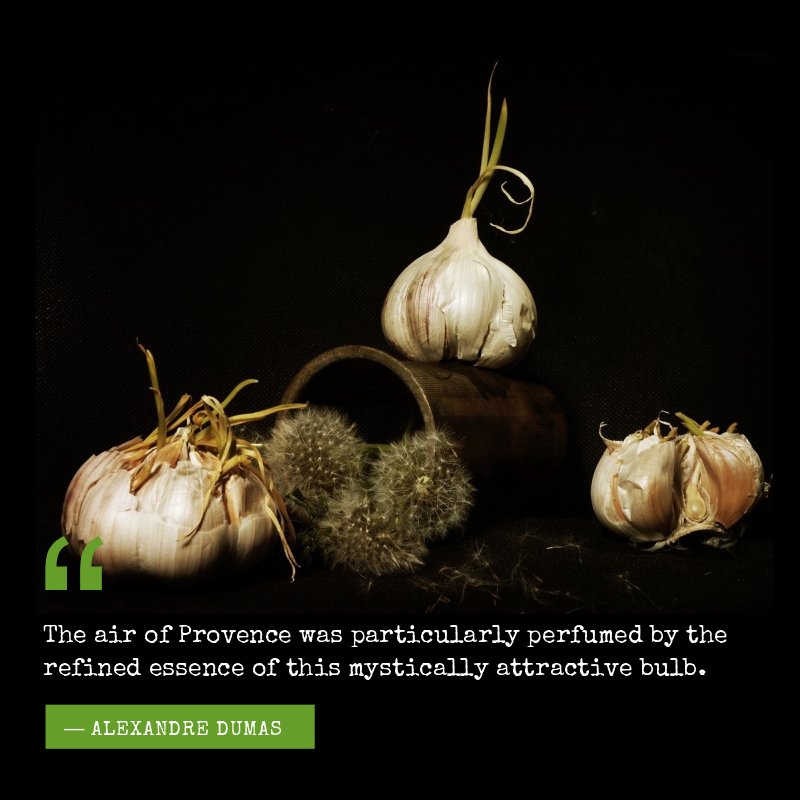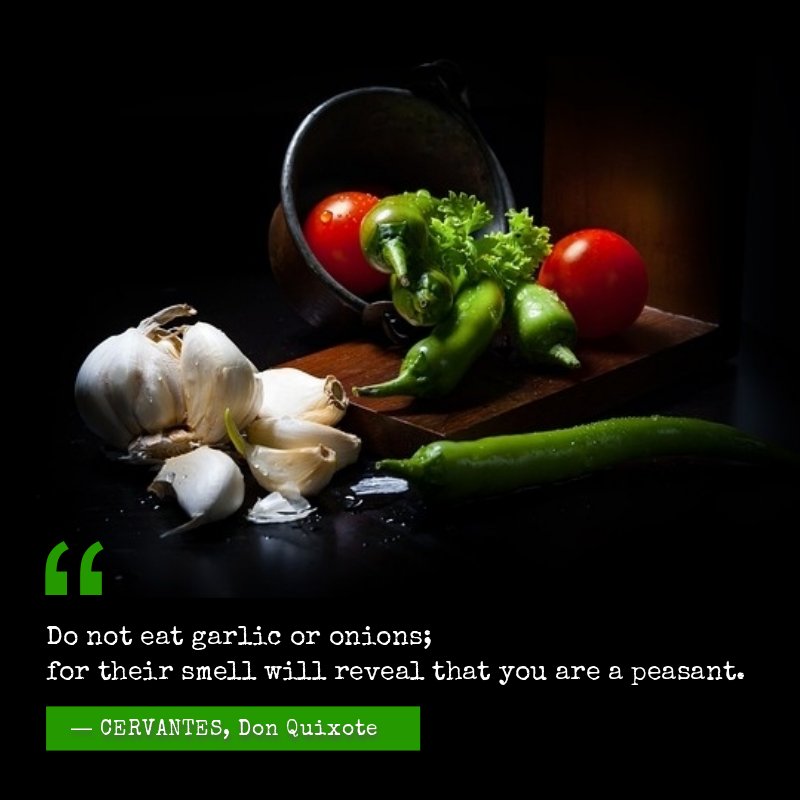As promised, I’m back with the second article about the magical properties of the garlic. Vampire Stories was all about how cultures across the world believe garlic to be a universal repellant against vampires and evil spirits. This time, you’ll see how garlic protection and benefits women and children, soul, crops and abundance.
Garlic protection – Romanian traditions
Help for women, children and soul
Besides the traditions related to the garlic’s protective power against evil spirits, there are also a few other traditions where it plays a part in the welfare of the young married couples and child care:
- On the wedding day, in Dolj county, the couple that gets in the church must go three times by each icon; in the meantime, a woman takes seeds of barley, raisins, three garlic cloves, five coins, seeds and fruits and throws them towards them; this will bring the young couple good crops;
- In Moldova, the bride who wants to have only two children puts two garlic cloves in the shoes received as a gift from the brom; also, if a woman wants to get pregnant, she must put nine garlic scapes in half a liter of rachiu (local home-made alcoholic drink obtained through twice distilling of the wine or certain fruits like plums, apples, without adding sugar or sugar syrup); the bottle is left for nine days on the chimney crown and after that the woman has to drink it;
- In Suceava county when women give up breastfeeding their babies, they should rub their breasts with garlic to stop the milk.
Garlic for abundance and crops
Gorovei & Ciausanu have found in the Romanian folklore several traditions that link the garlic with rich harvests, but also recommendations on how and when it should be planted. On the morning of the Resurrection Day, when women go to the church bringing pasca, they put garlic beneath it, believing that the blessed garlic once planted will never be destroyed. Also in Suceava, once the people have eaten the garlic, the left threads are thrown on the road so that next year will bring rich harvests.
If you plant garlic in one year, then you must plant it every year; if not, things will not go well for you; Garlic must be planted on Saint Dumitru’s Day (October 26); those who do it later die; the garlic is a head and asks for a (human) head; in autumn, before planting the garlic, one must jump over it so that the bulbs will grow big for the same reason, when planting it one must take the garlic from a cap.
Ciausanu also mentions the fact that Romanians link the planting of the garlic with Moon’s phases: hard, strong seeds (e.g. rye, corn, wheat) should be planted during the Waxing Moon, while soft, delicate seeds during Waning Moon. According to him,
“Onion, garlic, potato and all eatable vegetables are grown around the house should be sowed before the sickle of the first moon quarter.”
Garlic protection – what other
Gorovei & Ciausanu have found in the Romanian folklore several traditions that link the garlic with rich harvests, but also recommendations on how and when it should be planted. On the morning of the Resurrection Day, when women go to the church bringing pasca, they put garlic beneath it, believing that the blessed garlic once planted will never be destroyed. Also in Suceava, once the people have eaten the garlic, the left threads are thrown on the road so that next year will bring rich harvests.
If you plant garlic in one year, then you must plant it every year; if not, things will not go well for you; Garlic must be planted on Saint Dumitru’s Day (October 26); those who do it later die; the garlic is a head and asks for a (human) head; in autumn, before planting the garlic, one must jump over it so that the bulbs will grow big for the same reason, when planting it one must take the garlic from a cap.
Ciausanu also mentions the fact that Romanians link the planting of the garlic with Moon’s phases: hard, strong seeds (e.g. rye, corn, wheat) should be planted during the Waxing Moon, while soft, delicate seeds during Waning Moon. According to him,
“Onion, garlic, potato and all eatable vegetables grown around the house should be sowed before the sickle of the first moon quarter.”
Garlic protection – what others have to say about it
Europeans

Ancient Greeks are responsible for spreading throughout Europe the placement of garlic braids as well as squashing garlic in the rooms were women gave birth.
There are also some Eastern Europe traditions that connect garlic with the soul. Namely, placing garlic in the mouth of the deceased prevents the soul from re-entering the body and keep wandering evil spirits from entering and re-animating the body.
Jean Chevalier & Alain Gheerbrant, as well as Montague Summers mention how Batak people in Borneo use garlic to bring back the soul in the body and for good luck:
“It may be noted that the Battas or Batakas of Sumatra ascribe pining and wasting away, sickness, terror and death to the absence of the soul (Tendi) from the body and the souls must be lured back to his tenement. One of the most powerful soul-compelling herbs which is used by them in their mystic rites on these occasions is garlic. At the St.John (Midsummer) Festival of Fire, on the Vigil of the Major solemnity of that Saint, 23rd of June, at Dragingnan, Var, the people roasted pods of garlic by the bonfires. These pods were afterwards distributed to every family, and were believed to bring good luck.”

“The air of Provence was particularly perfumed by the refined essence of this mystically attractive bulb.” Alexandre Dumas
Czech tradition claims garlic is an essential part of Christmas and it should not miss at any Christmas dinner. It is believed to provide strength and protection. A bowl of garlic can be placed under the dinner table.
Africa & Palestine
Stephanie Bird mentions two types of African spiritual healers from different parts of Louisiana who use garlic as a protective amulet. It is placed in a protective pouch made of symbolic cloth sealed and strung on a string. This is carefully knotted in a special manner passed down for generations. The amulet is hung around the waist of children as a vermifuge (expelling intestinal worms) or around adults to protect them from illness. Being a holy herb, garlic is used to curb evil and bring goodness, which in turns yields health and well-being. Bird also mentions that such type of amulet medicine is traditionally practised in Africa, Caribbean, various parts of South and North America, most notably Louisiana.
Since ancient times garlic was believed to be the best way to protect everyone from the bad or negative energies. In other words, garlic was a very strong protection talisman against the Evil Eye.
In Palestinian tradition, the bridegroom who wears a clove of garlic in his buttonhole is assured a successful wedding night. Also, Ayurvedic medicine practitioners regard garlic as an aphrodisiac and having the ability to increase semen.
Love and hate of garlic

“Do not eat garlic or onions; for their smell will reveal that you are a peasant.” Cervantes
Although globally praised for its reputation for warding off evil and use as a medicinal herb, garlic was also deemed for its strong smell. This pungent smell of garlic is unfavourably referred to in the Talmud that recounts stories of people taking the blame for actions they did not commit, with the goal of saving another from embarrassment.
Those who smelled of garlic were considered vulgar by Roman, Greek and Indian in the upper classes or aristocracy. Egyptian priests worshipped garlic but actively avoided cooking and eating the fragrant cloves. Greeks wishing to enter the temple of Cybele had to pass a garlic breath test. Author Jason Johns mentions the fact that at the court of King Alfonso de Castile the knights caught smelling of garlic were cast out of polite society for a week.
In The Book of Garlic, Lloyd J. Harris mentions the name “pilgarlics” for bald men (lepers). Here’s his explanation:
“(…) in Medieval Europe because of their use of Allium as a scalp tonic and as an application for leprosy. Another theory is that the shape of the bad head suggested a peeled garlic bulb.”
In England, garlic breath was also deemed and considered unsuitable for refined young ladies and the gentlemen who wished to court them. Yet, even so, an English saying goes like this:
“Eat leeks in March, garlic in may, all the rest of the year the doctors may play.”
Probably it’s not by chance that also many Americans adopted the English attitude and didn’t embrace garlic until the 1940’s. Until then it was considered an ethnic ingredient and known by slang terms such as “Italian perfume” or “Bronx vanilla”. There are some of you who might not know, but the official story about the origin of the Chicago city name is the French version of the Miami-Illinois word shikaakwa (“Stinky Onion”), named for the garlic plant (Allium tricoccum), common along the Chicago River.
It is also said that Muhammad, the Prophet and founder of Islam, did not eat either garlic or onions because they conversed with supernatural beings and that he disliked its odour. Nevertheless, garlic is permitted for consumption, though Muhammad says that those who eat it should stay away from the mosque.
While in the past some did not appreciate garlic that much, the Italians from Salerno Regimen of Health (Italy) highly recommended it:
“Since garlic then hath powers to save from death, Bear with it though it makes unsavoury breath.”
And, it would not feel right to me to forget about an old Indian proverb I came across: “Garlic is as good as ten mothers.”
The magical garlic of all people
In the past decades, Dracula might have cemented into people’s the collective memory the idea that garlic is a repellant for vampires, yet looking at the long list of examples above, one must admit that garlic has far much longer affair with nations from all over the world. The beliefs related to garlic protection can be found anywhere. It’s a connection built over thousands of years and with more magical meanings we could have ever imagined.
For those of you who wonder how come I have not mentioned anything about the healing powers of the garlic, the reason is very simple. This is going to be the subject of my next article dedicated to the all-mighty garlic.
This article first appeared on Chakana.me, yet this version has been edited and updated.
READ MORE: Garlic Stories
Initially, I wanted to give a short reply to BBC’s article Why Romanians are obsessed with garlic. That was my initial intention, but that’s how it turned out. I ended up with a series of articles is dedicated to the almighty garlic. All the things I found out while doing my research were far too fascinating, so I thought they worth sharing. So, you have several articles based on well-researched and selected information about garlic, vampires, myths and its medical use.
- The Almighty Garlic of the Ancients
- The Magical Garlic – Vampire Stories from All Over the World
- Romanian Garlic Customs and Traditions
Bibliography:
- Aggarwal, Bharat B. Mirodenii vindecatoare. Brasov: Adevar Divin, 2016. Print
- Bane, Theresa. Encyclopedia of Vampire Mythology. McFarland, 2012. Kindle.
- Bird, Stephanie Rose. The Big Book of Soul: The Ultimate Guide to the African American Spirit. Charlottesville: Hampton Roads, 2010. Print.
- Block, Eric. Garlic and Other Alliums: The Lore and The Science. Royal Society of Chemistry, 2015. Kindle.
- Chevalier, Jean & Gheerbrandt, Alain. Dictionar de simboluri. Bucuresti: Artemis, 1995. Print
- Ciausanu, Gh. F. Superstitiile poporului roman. In asemanare cu ale altor popoare vechi si noi. Bucuresti: Saeculum Vizual, 2014. Print.
- Cooper, Levi. World of the sages: garlic breath. 2008.
- Craznic, Oliviu. Despre strigoi si vampiri. 2011.
- Evseev, Ivan. Dictionar de magie, demonologie si mitologie romaneasca. Timisoara: Amacord, 1998. Print.
- Gorovei, Artur & Ciausanu, Gh.F. Credinte si superstitii romanesti. Bucuresti: Humanitas, 2013. Print.
- Greyduckgarlic.com. History of Garlic.
- Johns, Jason. Growing Garlic – A Complete Guide To Growing, Harvesting and Using Garlic. CreateSpace, 2017. Kindle.
- Pamfile, Tudor. Mitologie romaneasca. Bucuresti: All, 1997. Print.
- Porritt, Gwen. Garlic. 2007.
- Stanculescu, Catalin. Strigoi vii, morti, moroi si pricolici in mitologia romaneasca. 2017.
- Summers, Montague. Vampires and Vampirism. New York: Dover Occult, 2005. Kindle.
- Voronca, Niculita Elena. Datinile si credintele poporului roman adunate si asezate in ordine mitologica. Iasi: Polirom, 1998. Print.
- Vulcanescu, Mircea. Mitologie romana. Bucuresti: Editura Academiei, 1985. Print.


